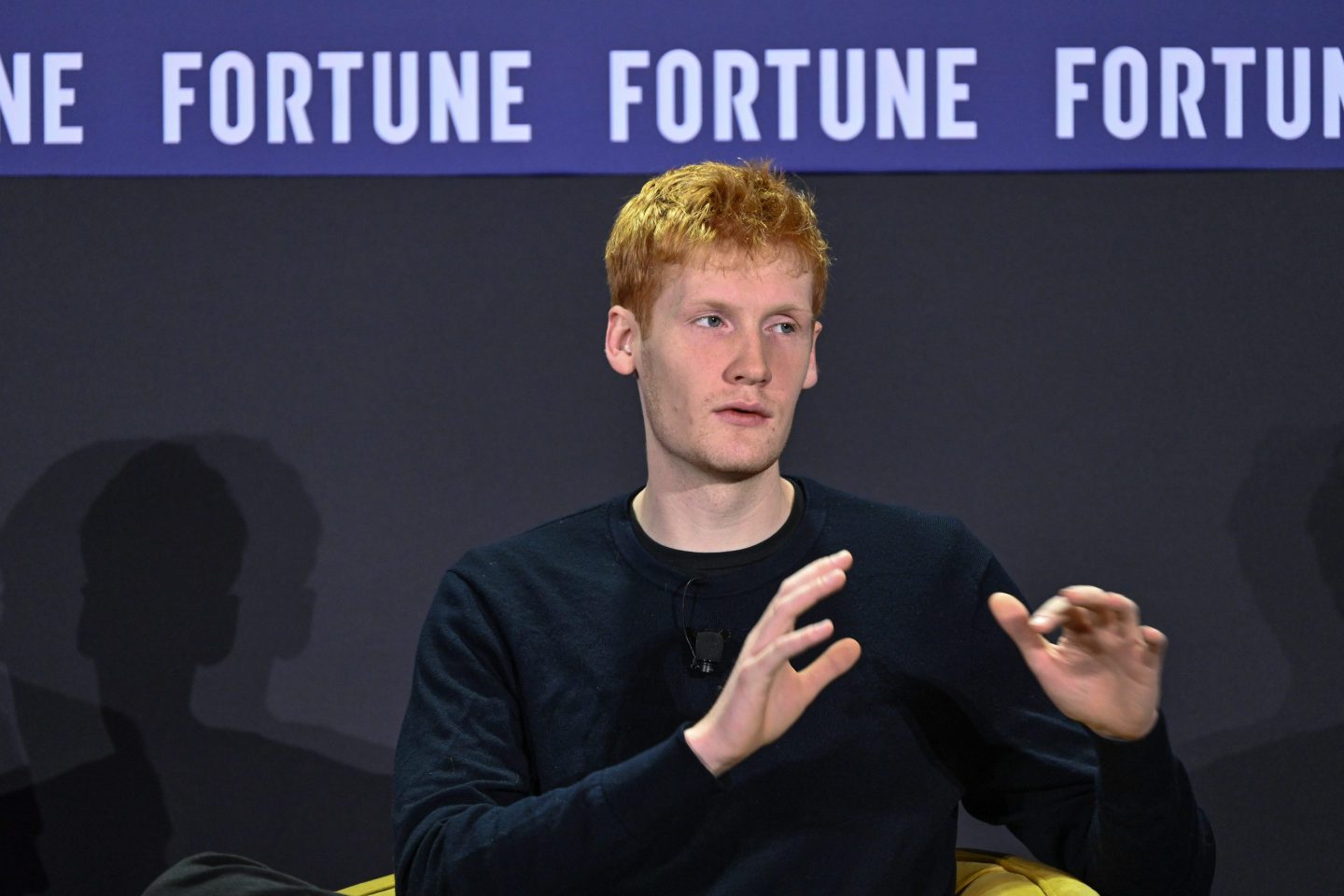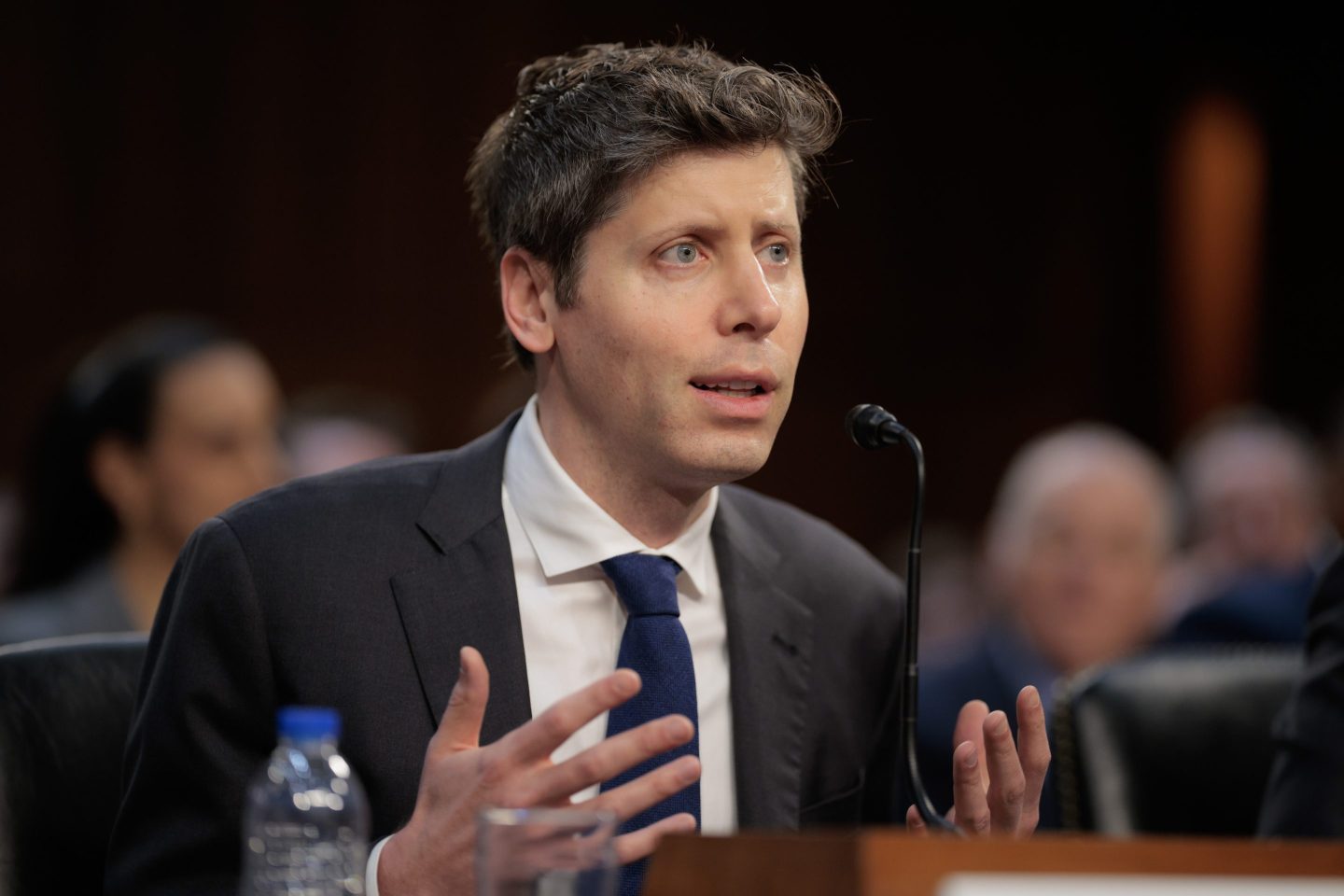Good morning. And happy anniversary to Fortune’s weekly CIO Intelligence newsletter, which launched one year ago.
My longtime colleague John Kell has been doing a crackerjack job following the nuts-and-bolts implementation of technology at the world’s largest corporations. If that’s your speed, please give it a read.
Today’s news below. —Andrew Nusca
Want to send thoughts or suggestions to Data Sheet? Drop a line here.
Nvidia is who we thought it was (a money-making machine)

If Silicon Valley were Bridgerton, there’s little doubt about which company commands the title of the Queen’s diamond of the season: Nvidia.
That remains the case this week after the Santa Clara, Calif. company reported its hotly anticipated fourth quarter financial results. Both its quarterly earnings as well as its quarterly guidance bested Wall Street’s lofty expectations, signaling that the AI boom is far from a bust—at least for Jensen Huang’s company.
(To its market bears: Sorrows, sorrows, prayers.)
Nvidia reported Q4 earnings of $0.89 on revenues of $39.33 billion; Wall Street was looking for earnings of $0.84 on revenues of $38.05 billion. Its fiscal year revenue was up 114% to $130.5 billion. The company said it expects about $43 billion in Q1 revenue; the consensus estimate is $41.8 billion.
It’s good to make AI processors amid an AI boom. It’s even better to make some of the world’s most advanced and capable AI chips. But to control the lion’s share of that market with hefty profits margins to boot? That’s the best.
Investors continue to watch those margins, though. Nvidia reported a 73% gross margin for the quarter, down three points on an annual basis. By its own admission, the company’s newer products are more complex and costly—a caution flag after DeepSeek’s inexpensive AI model advancements earlier this year reframed the ROI of AI conversation. —AN
Amazon’s Alexa gets a generative AI upgrade
Ten years after its debut, Alexa is finally getting an upgrade for the generative AI age.
The new Alexa+, unveiled at a splashy event in New York City on Wednesday, transforms the familiar voice-activated chatbot into an action-oriented, interconnected service.
Instead of simply telling you the weather or playing a song, the new Alexa can manage and coordinate a string of activities: booking a table at a restaurant while scheduling an Uber pickup for your spouse and texting the babysitter, for example.
The launch of Alexa+, which will be available to limited customers in March, can’t come soon enough for Amazon, which has fallen behind amid a new crop of AI services such as OpenAI’s ChatGPT and Google’s Gemini. Amazon’s effort to catch up and revamp Alexa has been beset by delays, with the company initially teasing the new Alexa at an event more than a year ago.
In a sign of Amazon’s confidence, the company plans to charge consumers $20 a month for access to the service, though it will be free for Amazon Prime members. It works across Alexa devices, Amazon smart home devices, a new Alexa.com website, and a new Alexa app.
The revamped Alexa experience can use a variety of in-house and third-party AI tools, which the company believes will vault Alexa to the front of the pack.
Among the state-of-the-art AI large language models powering Alexa+ are Amazon’s own Nova models as well as LLMs from Anthropic, the AI startup in which Amazon has invested $8 billion, and partnerships with a variety of partners including TicketMaster, GrubHub, Uber, and Amazon-owned Whole Foods. —Sharon Goldman
Spotify has a bone to pick with Apple (and a few to break)
Daniel Ek hasn’t given up on trying to make Apple hurt.
The Spotify CEO wants the EU to nail his nemesis for what he calls Apple’s “well-established pattern of delaying and stalling” compliance with the bloc’s Digital Markets Act, an antitrust rulebook for Big Tech.
“It is time for Europe to show that we are going to enforce the law that’s already been passed,” Ek said.
The European Commission is preparing to decide that matter next month. It has already preliminarily found that Apple is breaking the DMA by (among other things) not allowing app developers to freely steer users off the iOS platform to other places where they can get cheaper deals on content and subscriptions because Apple can’t take a cut there. This is the gist of Spotify’s long-running dispute with Apple.
In theory, the Commission could whack Apple with a fine of up to 10% of global revenues for breaking the DMA.
But in practice, of course, doing so could set off a tariff war with the U.S. Just days ago, President Donald Trump issued a memorandum making such a threat; the EU responded by saying it will continue to enforce its laws thank you very much.
So Ek may get what he wants, but there will be consequences. —David Meyer
More data
—Google gets FDA clearance for Pixel Watch 3’s “loss of pulse detection” feature.
—U.S. intelligence chief criticizes U.K. Apple order. Forcing Apple to add an iCloud backdoor to access user data is an “egregious violation” of Americans’ rights.
—Thinking Machines is raising money. Mira Murati’s new AI lab reportedly aims to raise $1 billion at a $9 billion valuation.
—Salesforce gives a soft outlook for 2026. Guidance for next fiscal year is between $40.5 billion and $40.9 billion; analysts were looking for $41.35 billion.
—Alibaba debuts Wan 2.1, a series of Sora-esque open-source AI models for generating images and videos.
—Instagram mulls standalone Reels app. (Hmm, where have we seen this before…)
—eBay shares drop 7%. Though Q4 revenue was up 1% from last year to $2.6 billion, the retailer’s estimated Q1 revenue is below Wall Street expectations.
—Snowflake shares up 8%. The cloud data storage company reports a 28% increase in Q4 revenue, to $943.3 million, beating analyst estimates.
—Jeff Bezos overhauls Washington Post op-ed page. “Personal liberties” and “free markets” in, most everything else out.














